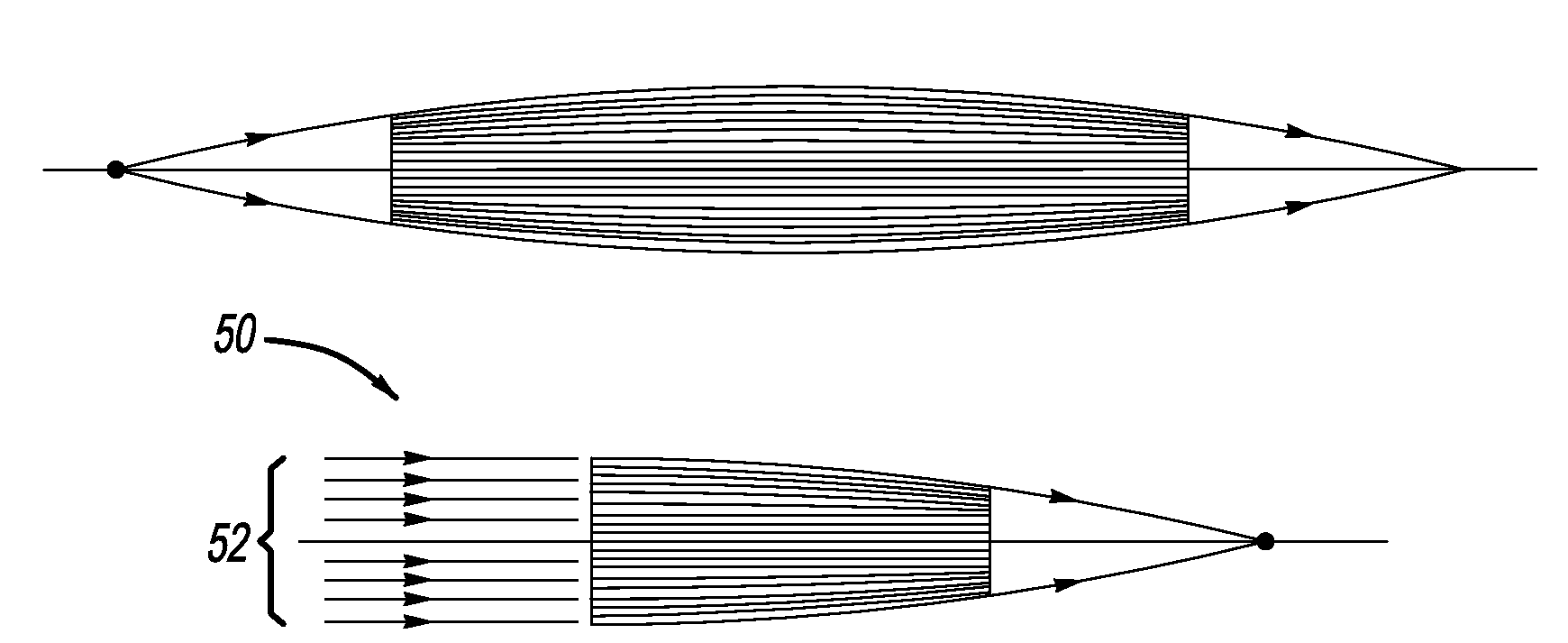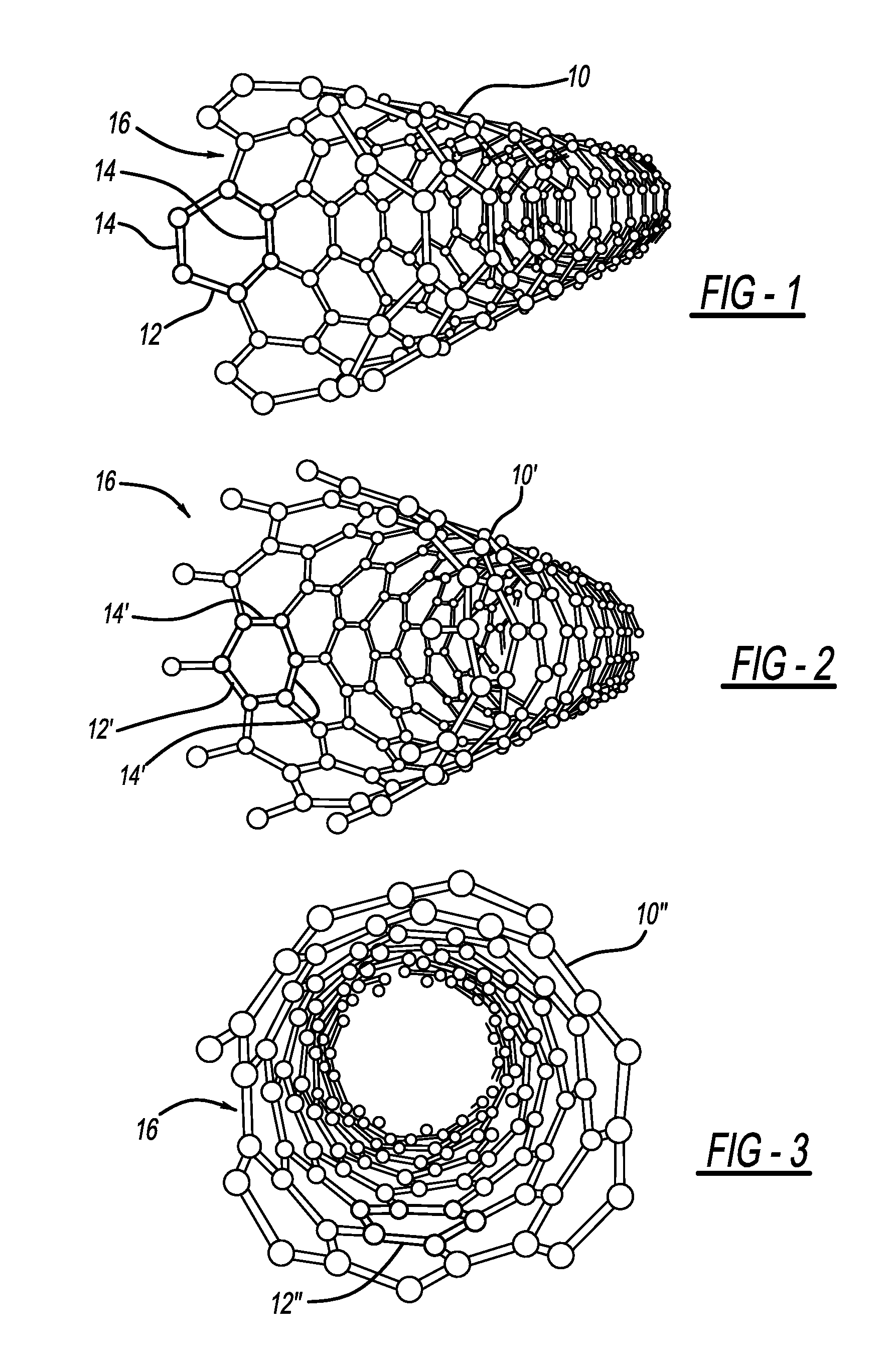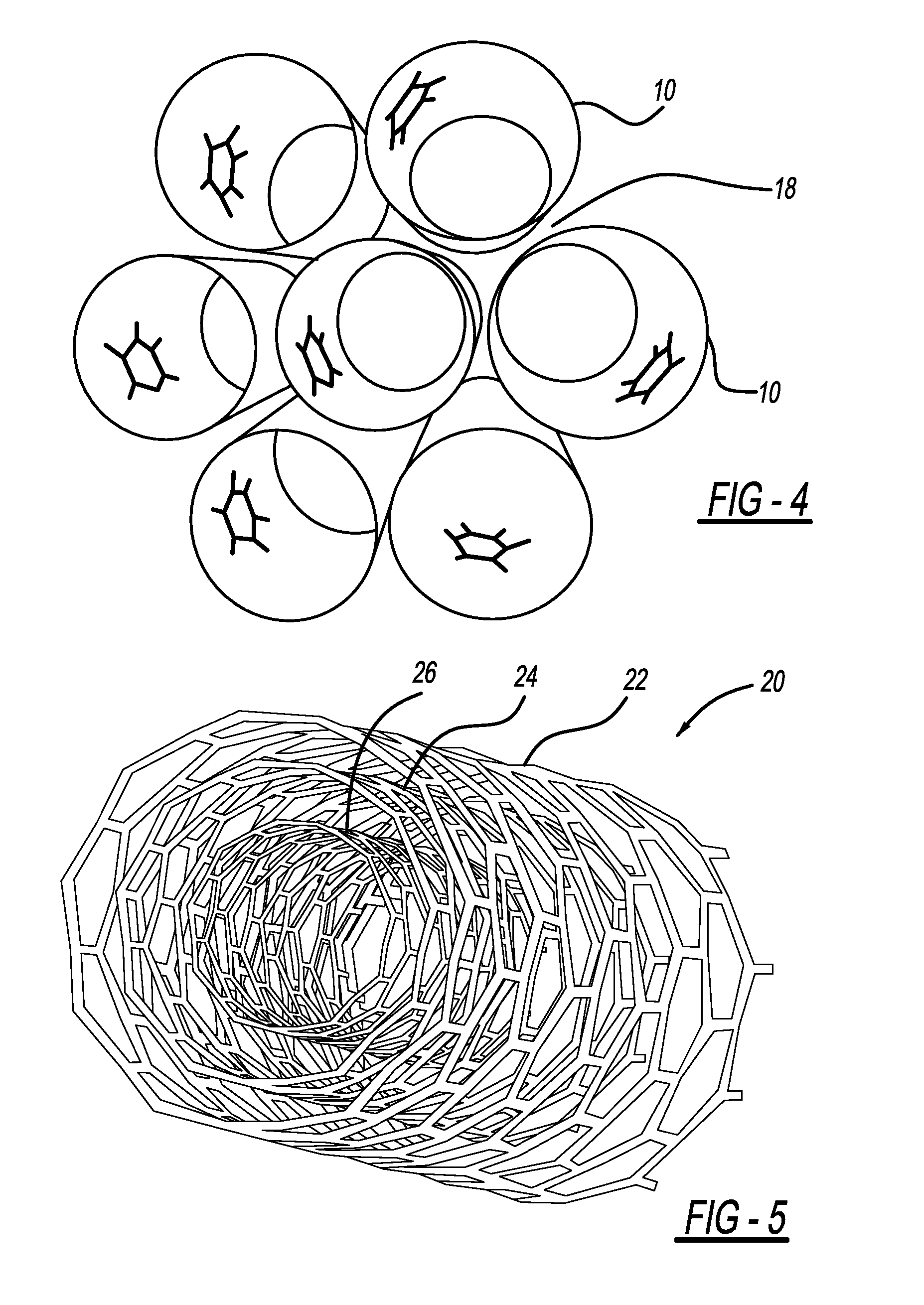Nanotube based device for guiding x-ray photons and neutrons
a technology of x-ray photons and neutrons, which is applied in the field of systems for generating and controlling the beam direction of xray radiation for analytical instruments, can solve the problems of low capture capability, limited capillary technology, and limited glass material formation of glass polycapillary optics, so as to enhance beam density and reduce photon losses
- Summary
- Abstract
- Description
- Claims
- Application Information
AI Technical Summary
Benefits of technology
Problems solved by technology
Method used
Image
Examples
Embodiment Construction
[0042]Entirely new tubular structures developed during last two decades are called nanotubes. The name nanotube refers to the thickness of these tubes that is typically in a sub-micrometer range. Several properties specific to the nanostructure of these tubes have contributed to a variety of new product applications: as light and electron emitters, as reinforcement for industrial and construction materials, as thermoconducting medium for heat transfer, and many others.
[0043]C (carbon) is the most common element of these structures, but nanotubes from other materials such as boron nitride, silicon oxide, and rare earth fluoride have been fabricated, as well. This variety suggests that a relatively wide selection of materials of varying effective atomic numbers may be available.
[0044]As illustrated in FIGS. 1 through 3, a carbon nanotube can be described as rolled graphene sheets with seamlessly connected edges. As graphene is a single layer of carbon atoms arranged in a honeycomb pat...
PUM
 Login to View More
Login to View More Abstract
Description
Claims
Application Information
 Login to View More
Login to View More - R&D
- Intellectual Property
- Life Sciences
- Materials
- Tech Scout
- Unparalleled Data Quality
- Higher Quality Content
- 60% Fewer Hallucinations
Browse by: Latest US Patents, China's latest patents, Technical Efficacy Thesaurus, Application Domain, Technology Topic, Popular Technical Reports.
© 2025 PatSnap. All rights reserved.Legal|Privacy policy|Modern Slavery Act Transparency Statement|Sitemap|About US| Contact US: help@patsnap.com



